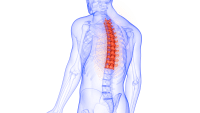Nurses are critical to improved resident well-being.
Takeaways:
- Elderly patients using antipsychotic medications are at a 1.6 to 1.7 times increased of risk of death, and antipsychotic medications are associated with significant side effects.
- Individual with dementia may have behavioral expressions that represent unmet needs (discomfort, pain, hunger, need to use the bathroom). Understanding the true cause of behavioral expressions can help avoid unnecessary antipsychotic medication use.
- Nursing professionals are vital in the effort to reduce the inappropriate use of antipsychotic medications and improve resident well-being.
We perceive the world around us by combining information from what we see, hear, touch, taste, and smell. Standing in a hallway, we hear the elevator ding and someone singing gospel in a hushed voice, feel the flat carpet below our shoes, and detect a faint scent of lavender mingling with fresh-baked cookies. Our minds instantly interpret these sensory messages based on our memory and experience, compressing information into meaning. We respond in a consistent and predictable way. We look to see who’s stepping off the elevator or who might want to enter it.
Download a visual abstract of this continuing nursing education article to share on social media, here. Be sure to tag us at @MyAmericanNurse on Twitter and @MyAmericanNurse2020 on Facebook and Instagram!
Many people living in nursing homes have impaired senses, such as vision or hearing loss. They also may have disorders such as dementia that make interpreting information less predictable and more inconsistent with others’ general perceptions. Picture Joe*, an 82-year-old man living with dementia, standing near us in that same hallway. He perceives and processes the same sensory information we received differently. His mind misinterprets many of the signals. He hears the same elevator ding and appears to be ready to fight. Unless you know about Joe’s past experience as a boxer, you might not understand that the elevator bell triggers his memory and his defensive posture.
Individuals with dementia frequently have difficulty explaining what they’re feeling or experiencing, and we’re left to interpret observed behavioral expressions. These behaviors can sometimes appear as fear, anger, or aggression, and that may be how the resident communicates an unmet need, such as discomfort in a current position or location, a need to move or for time alone, environmental noises, or pain. In nursing homes, the interprofessional team is charged with assessing these behaviors and determining the most appropriate care. All too frequently the answer has been to medicate to calm or chemically restrain with antipsychotics, without understanding the true cause of the behavior.
Why focus on antipsychotics?
In the U.S. healthcare system and American culture, medications are held in high regard as a way to manage symptoms of illness, reduce distress, and manage physical and mental health problems. Antipsychotics (such as quetiapine, risperidone, and haloperidol) sometimes have been viewed as the antidote to expressions of fear, anger, and aggression associated with dementia.
Antipsychotics have been used to treat people with dementia when they exhibit behaviors (agitation, aggression, delusions) similar to those seen in people with psychotic illnesses such as schizophrenia. This is despite the black box warning of increased mortality for elderly patients with dementia-related psychosis. According to the U.S. Food and Drug Administration (FDA), these patients are at a 1.6 to 1.7 times increased risk for death; most of the deaths seem to be related to cardiovascular (heart failure, sudden death) or infection (pneumonia) issues. Antipsychotics also are associated with significant side effects, such as increased risk of cerebrovascular accident, involuntary or disabling movement (gait changes, extrapyramidal signs, tardive dyskinesia), orthostatic hypotension, edema, weight gain, sedation, confusion, delirium, cognitive impairment, and metabolic changes (increased glucose and triglycerides). The FDA states that “antipsychotics are not indicated for the treatment of dementia-related psychosis” except in cases of the development (and documentation) of delirium.
The Centers for Medicare & Medicaid Services (CMS) recognized the need to enhance the quality of life and care for individuals living with dementia and launched the National Partnership to Improve Dementia Care in Nursing Homes in 2012. The partnership’s goal is to reduce the use of antipsychotic medications and encourage nonpharmacologic approaches and person-centered dementia care. Under the direction of CMS, Quality Improvement Organizations (QIOs)—composed of health quality experts, clinicians, and consumers—work to improve healthcare quality. They support the National Partnership to Improve Dementia Care in Nursing Homes at local levels in collaboration with organizations such as nursing home trade associations, state survey agencies, and professional organizations.
Some nursing home residents may require antipsychotic medications as a last resort. However, given what we know about the risks of using them to address behavioral expressions associated with dementia, alternative strategies to support residents should be used first.
Lead the change
Nurses are vital to reducing inappropriate use of antipsychotic medications and improving nursing home resident well-being. The good news is that the national prevalence of long-stay nursing home residents (those who have stayed more than 100 cumulative days) receiving antipsychotics has decreased from 38.9% in 2011 to 14.6% in 2018. Nurses who work in long-term care have been instrumental in that success. Staying on message, understanding antipsychotic use, and setting goals will help you participate in this continuing effort.
Stay on message
Take the lead in conveying a consistent message about using nonpharmacologic approaches to support residents with dementia. Talk with providers about the work you’re doing to avoid initiating antipsychotics or minimizing their dosage and duration. This is one of the most effective actions you can take to help the whole care team (including medical directors, nurse practitioners, nurses, and nursing assistants) stay committed to improving care and decreasing antipsychotic use. Link your message about reducing antipsychotics to your nursing home’s priorities and values (quality, compassionate care and improving resident quality of life). Offer resources to help staff, residents, and families develop a shared understanding of the risks of antipsychotics. (See Share information.)
Share these useful resources.
Antipsychotics in nursing home basics
• American Health Care Association/National Center for Assisted Living Quality Initiative—Fast facts: What You Need to Know About Antipsychotic Drugs for Persons Living with Dementia.
• National Nursing Home Quality Improvement Campaign—Use Medications Appropriately: Probing Questions.
Dementia care
• Alzheimer’s Association—Behaviors: How to Respond When Dementia Causes Unpredictable Behaviors.
• Centers for Medicare & Medicaid Services. Quality, Safety & Education Portal—CMS hand in hand training—A training series for nursing homes.
Guidelines for supporting residents living with dementia
• Alzheimer’s Association—Dementia care practice recommendations.
• American Psychiatric Association—Practice guideline on the use of antipsychotics to treat agitation or psychosis in patients with dementia.
Understand antipsychotic use
Approach antipsychotic use reduction like any other quality assurance/performance improvement initiative. Start by learning about the current use of antipsychotics for residents with dementia, then ask probing questions to understand when, why, and how often they’re prescribed, duration of use, therapeutic goals, and how goals are identified and monitored.
As you examine your residents’ medical records and other data sources, document your findings and look for patterns of use. You might identify that nurses are requesting antipsychotic medications before completing resident assessments, or that some providers are ordering them more frequently than others. You may discover indications for use of antipsychotic medications that are vague or not clinically justified, such as for agitation, aggressiveness, or resistance to care. Don’t assume behavioral and psychological symptoms in residents with dementia are psychotic and should be managed with antipsychotic medications. Consider behavioral expressions as communication of unmet needs, such as fear, hunger, pain, or a need to use the bathroom.
Set a goal
Once you truly understand what’s driving antipsychotic use in residents with dementia, set an overall reduction goal. Some nursing homes have a higher percentage of residents with psychiatric disorder diagnoses. Antipsychotic use may be appropriate when clinically indicated, but it should be carefully examined and monitored. Use your Facility Characteristics Report from CMS to assess how care of your residents compares to care of residents in other nursing homes in your state and the nation.
According to CMS, the five states with the lowest antipsychotic use in nursing homes have average rates between 7.2% and 11.2%, well below the 14.6% national average. Guide your interprofessional team in setting a numeric and timebound goal to support reducing antipsychotic medication use. For example, your goal might be to reduce the percentage of long-stay residents taking an antipsychotic medication from 21% to at or below the state average of 13% in 6 months.
Lay the groundwork for improvement
Before beginning any ordered systematic dosage reductions, lay the groundwork for improvement, which should include identifying and implementing best practices, evaluating individual residents’ needs, ensuring mental and physical stimulation, promoting restorative sleep, and assessing the environment.
Best practices
Begin by reviewing current evidence and guidelines for pharmacologic and nonpharmacologic approaches to dementia care. Provide training, education, and coaching for direct care and support staff so they can better understand and communicate with residents with dementia. Staff must know how to listen, speak, act, and react in ways that create meaningful interactions.
Individual resident needs
Carefully observe and look for patterns in how each resident responds to different interactions or sensory stimuli. Consistent assignments can help staff get to know each resident and identify patterns. Learn what nonpharmacologic interventions are most effective for individual residents if they become anxious, fearful, aggressive, or resistant to care. Always assess for pain and comfort first and follow up with appropriate interventions (pain management, repositioning), especially if the resident can’t make his or her needs known. (See Nonpharmacologic care approaches.) To help avoid inappropriate antipsychotic use, document and communicate specific triggers or behavioral responses to all care team members.
Residents with dementia can become anxious, fearful, aggressive, or resistant to receiving care. Try these strategies to reduce behavioral and psychological symptoms of dementia.
• Sensory practices: aromatherapy, massage, multisensory stimulation, bright light therapy
• Psychosocial practices: validation therapy (the practice of validating the individual’s perceived reality and emotional experience to ensure negative emotions aren’t exacerbated), reminiscence therapy, music therapy, pet therapy, meaningful activities
• Structured care protocols: individualized communication and interaction strategies, technical skills (for example, bathing and oral care).
Source: Scales 2018
Mental and physical stimulation
Consider how your residents’ days are structured. Activities of daily living training can help improve executive function, physical endurance, and depressed mood of nursing home residents with dementia, even if it is moderately severe. (You can find several dementia rating scales at dementiacarecentral.com/aboutdementia/facts/stages/#scales). Provide meaningful engagement with staff and other residents throughout the day, and include activity and exercise to maintain mobility, reduce boredom and fatigue, and decrease over- or understimulation.
Sleep promotion
Lack of restorative sleep, which prevents a person from completing all five stages of sleep, decreases the body’s ability to heal and repair itself. The result can be irritability that’s incorrectly attributed to behaviors associated with dementia and inappropriately treated with antipsychotics. Provide a quiet environment at night that’s conducive to sleep.
Staff may need to enter residents’ rooms to provide care (including assistance with using the bathroom and help with repositioning) during the night, but examine these routines to minimize sleep disruption. In a study by Corbett of staff who received training and materials on person-centered care of residents with dementia experiencing sleep problems, changes to nighttime care plans resulted in improved behavioral and psychological symptoms of dementia.
Environment assessment
Environmental factors such as loud or competing noises, clutter, or lack of personal space can trigger or exacerbate behavioral or psychological symptoms. Although structural modifications might not be possible, changes to problematic areas may be helpful. Conduct a simple assessment by personally experiencing the space in the same way a resident does. For example, sit in a common area, eat in the dining area, or participate in an activity. Note all of the potential sensory triggers and explore how the environment can be adapted or modified to reduce them.
Reduce antipsychotic medication use
Reducing the use of antipsychotic medications requires working with providers, implementing a systematic approach, and involving residents and families.
Work with providers
Share your nursing home’s goal to reduce antipsychotic medication use and work directly with providers. Start communication before a resident is admitted to your nursing home. For example, if the resident is coming from a hospital, speak to the discharge planner to understand when and why an antipsychotic medication was started to determine whether it can be reduced or discontinued upon admission. As providers assess residents, share information about nonpharmacologic interventions available as alternatives to antipsychotics. To avoid antipsychotics being prescribed by on-call clinicians or others not familiar with your nursing home, designate a gatekeeper (such as the director of nursing) to review all requests for new antipsychotic medications before sending the order to the pharmacy.
Implement systematic dose reductions
Work with providers and the care team to identify and prioritize residents for gradual antipsychotic dose reduction. For example, residents may be good candidates for successful reduction if they use antipsychotics as needed, recently started the antipsychotic for transient agitation or sleep, were prescribed the medication for delirium while in the hospital, or have late-stage dementia and sleep most of the time.
Frequently, antipsychotics are started without a plan for gradual dose reduction. A tapering plan should be started early, unless clinically contraindicated, so the resident, family, and staff expect it. CMS requirements state that trials of gradual dose reduction, in the absence of identified and documented clinical contraindications, must be attempted; if they fail, they should be attempted again in approximately 3 months. Include gradual antipsychotic medication dose reduction as part of your nursing home’s standard prescribing practice to eliminate or reduce long-term use. Keep in mind that dementia, like any chronic condition, changes over time and that medications and nonpharmacologic approaches should be monitored and adjusted as needed.
Involve the resident and family
Residents and their families must have a voice in deciding whether antipsychotics are used. Discuss the risks and benefits of the proposed care and available alternatives. If the medication is prescribed, engage residents and their families in the medication-tapering plan and eventual discontinuation. Recognize that residents or families may fear that reducing or discontinuing the medication will result in disruptive behaviors. Discuss plans to monitor and support the resident.
Experience greater satisfaction and well-being
Changing your culture and practice to first use nonpharmacologic approaches to care—
rather than antipsychotics—for residents with dementia-related behaviors will take time. Track the use of antipsychotics against your goal. Monitor how well all members of the care team are anticipating and responding to residents’ needs and
behavioral expressions. When you identify barriers, assess what additional resources are needed to support staff, residents, and family members.
Quality dementia care requires an individualized approach to reduce reliance on antipsychotic medications. To determine what works best, assess communication strategies that help staff understand each resident’s needs and observe and measure the resident’s responses to a variety of interventions.
The data will tell you when you’ve reached your reduced antipsychotic medication goal. You’ll see fewer sedated residents, hear residents interacting with families and staff and engaging in activities they enjoy, and sense less fear. Residents like Joe, as well as his family and staff, will experience greater satisfaction and improved well-being.
Kelly O’Neill is a program manager at Stratis Health in Bloomington, Minnesota. Marilyn Reierson is a senior program manager at Stratis Health. Kaylie Doyle is a program manager at Telligen in West Des Moines, Iowa. Angel Davis is a health insurance specialist/nursing home subject matter expert at the Centers for Medicare & Medicaid Services in Baltimore. Jane Pederson is chief medical quality officer at Stratis Health.
*Name is fictitious.
References
Centers for Medicare & Medicaid Services. Medicare and Medicaid programs; Reform of requirements for long-term care facilities. Fed Regist. 2016;81(192):686880-68872. Codified at 42 CFR §405, 431, 447, 482, 483, 485, 488, and 489. federalregister.gov/documents/2016/10/04/2016-23503/medicare-and-medicaid-programs-reform-of-requirements-for-long-term-care-facilities
Centers for Medicare & Medicaid Services. State operations manual: Appendix PP—Guidance to surveyors for long term care facilities. November 22, 2017. cms.gov/Regulations-and-Guidance/Guidance/Manuals/downloads/som107ap_pp_guidelines_ltcf.pdf
Corbett A. Developing a night-time care programme for people with dementia with sleep disturbance in care homes. Alzheimer’s Society. alzheimers.org.uk/research/our-research/research-projects/developing-night-time-care-programme-people-dementia-sleep-disturbance-care-homes
Henskens M, Nauta IM, van Eekeren MCA, Scherder EJA. Effects of physical activity in nursing home residents with dementia: A randomized controlled trial. Dement Geriatr Cogn Disord. 2018;46(1-2):60-80.
Lenzer J. FDA warns about using antipsychotic drugs for dementia. BMJ. 2005;330(7497):922.
National Institute of Mental Health. Antipsychotics. October 2016. nimh.nih.gov/health/topics/mental-health-medications/index.shtml#part_149866
National Partnership to Improve Dementia Care in Nursing Homes. Antipsychotic Medication Use Data Report. Centers for Medicare & Medicaid Services. April 2019. cms.gov/Medicare/Provider-Enrollment-and-Certification/SurveyCertificationGenInfo/Downloads/Antipsychotic-Medication-Use-Data-Report.pdf
Scales K, Zimmerman S, Miller SJ. Evidence-based nonpharmacological practices to address behavioral and psychological symptoms of dementia. Gerontologist. 2018;58(suppl 1):S88-102.
Shell LM. 7 facts about residents and sleep. American Association of Nurse Assessment Coordination. July 22, 2014. aanac.org/Information/Care-Connection-Blog/post/7-facts-about-residents-and-sleep/2014-07-22
Simmons SF, Bonnett KR, Hollingsworth E, et al. Reducing antipsychotic medication use in nursing homes: A qualitative study of nursing staff perceptions. Gerontologist. 2018;58(4):e239-50.



















1 Comment.
I am doing a QI project on this subject.